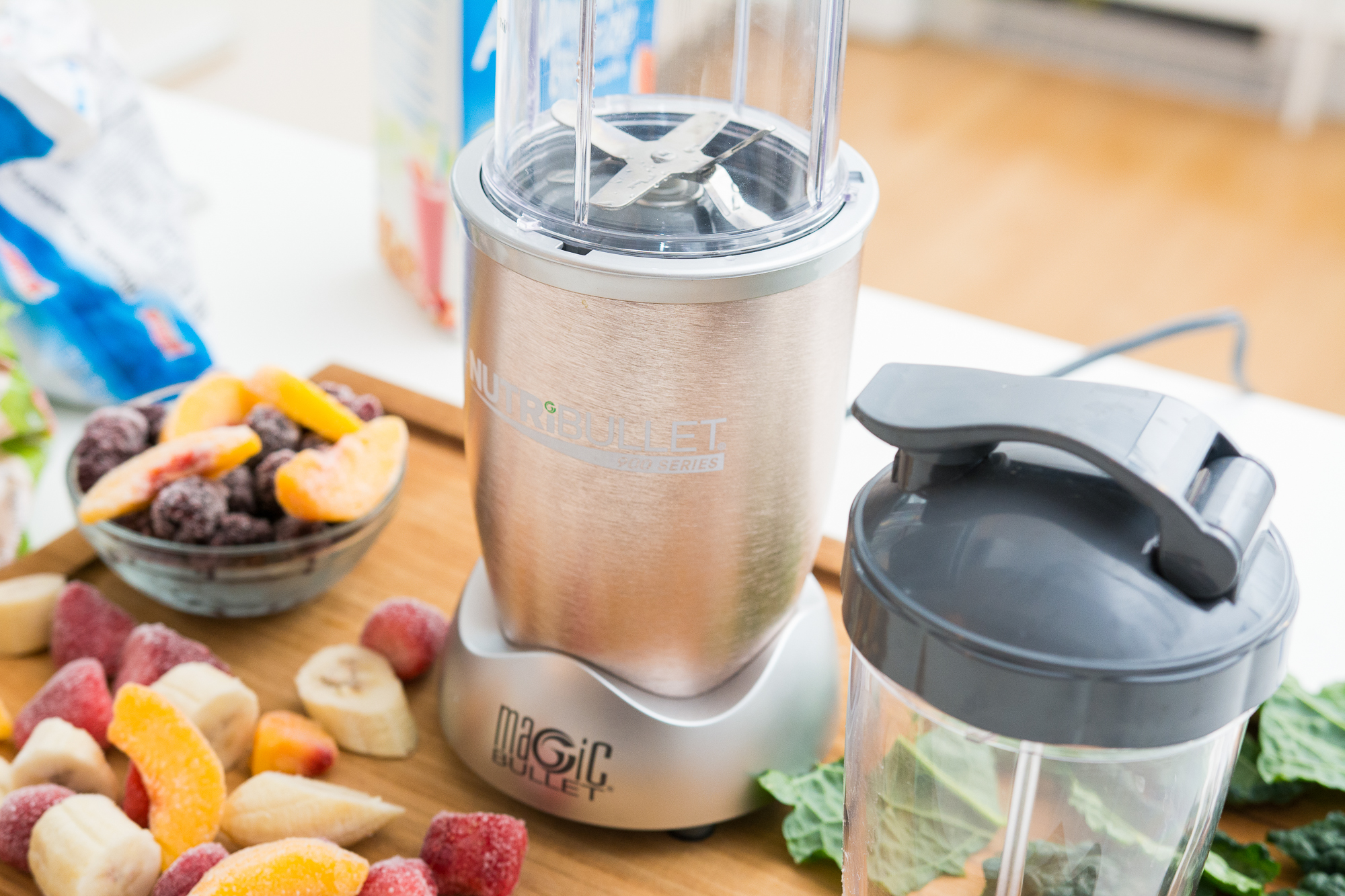The best personal blender

By Lesley Stockton
This post was done in partnership with Wirecutter, reviews for the real world. When readers choose to buy Wirecutter's independently chosen editorial picks, it may earn affiliate commissions that support its work. Read the full article here.
After spending 20 hours researching two dozen personal blenders and testing 10 models with an expert in our test kitchen, we think the NutriBullet Pro 900 Series offers the best balance of power, simplicity, convenience, and price for most people. We pureed almost 25 pounds of frozen fruit, hearty kale, fibrous ginger, gooey peanut butter, and sticky dates into thick smoothies to come to this conclusion.
Who should buy a personal blender
A personal blender is a convenience item for the dedicated smoothie lover who's short on time in the morning. If you want to quickly make a morning smoothie and run out the door without having to wash a blender pitcher and lid, a personal blender is for you.
Personal blenders are good for small jobs like smoothies, but their motors aren't as powerful as the ones found in our picks for full-size blender. This means you'll need to use more liquid, cut fruit into smaller chunks, and avoid crushing large pieces of ice.
How we picked and tested
The perfect personal blender is powerful, hands-free, and simple to use. It should be able to make relatively smooth purees in about a minute, and should have a small footprint that doesn't take up much space on a countertop. A sturdy cup with a secure travel lid is a major plus, especially for commuters. We also found that blenders that had only one speed and were powered by engaging the cup with the base were the easiest to use. And of course, the perfect personal blender is also durable and reliable.
We decided on 10 blenders to test, and started by blending a smoothie from frozen bananas, strawberries, raspberries, blackberries, and juice for the recommended running time of each specific model. If any blender couldn't make a puree in that amount of time (usually one minute) or the base began to get noticeably hot, it was disqualified.
Then, we blended curly kale and water. We strained the mixture to evaluate the amount and size of any leftover solids, fibers, and particles. We also pureed ginger and frozen peaches to test each model's ability to tackle tough fiber. Finally, we made a hearty shake from dates, banana, peanut butter, ice, and almond milk.
After blending each smoothie, we attached the travel lid and gave each tumbler a vigorous shake over the sink to check for leaks. We then tried to drink thick smoothies from the opening in the lids. Finally, we took decibel readings to check how noisy each blender was.
Our pick
Out of the models we tested, the NutriBullet Pro 900 has the best balance of power, ease of use, and price. It blended everything we threw at it without straining. The Pro comes with a secure-fitting travel lid, and the large cup has a blending capacity of 24 ounces. It's also the only blender we tested that includes two blade assemblies. With a 5½-inch-diameter footprint, it'll tuck away neatly on most kitchen counters, and its 15-inch height clears standard upper cabinets. NutriBullet Pro comes with a limited one-year warranty, but a four-year extended warranty is available.
The NutriBullet Pro had no problem blending thick, spoonable smoothies. Our banana-berry smoothie came out lump-free. The kale puree wasn't the finest blend we saw, but it wasn't as fibrous as the kale from the Nutri Ninja. The NutriBullet blended dates well, leaving only a few small, pleasantly chewy pearls in the bottom of the cup that didn't clog the straw.
A small, durable blender
The Tribest PB-150 is a durable, no-frills personal blender. We like the Tribest for its tiny footprint and minimal clutter. At 16 ounces, the blending cups are smaller than those on both the NutriBullet and Breville blenders, and the travel lid doesn't have a seal, so you can't throw it in a bag. The Tribest made thinner smoothies than our top or upgrade picks because it required more liquid to get a consistent puree.
The Tribest includes the smallest cup of all our picks, which has a maximum blending capacity of 10 ounces (a 24-ounce cup is available to purchase on the Tribest website). This little blender can be easily stashed in a corner or on a shelf, and the two 16-ounce blending cups won't add too much clutter to your kitchen. We also liked its streamlined, intuitive design.
A sleek and powerful blender
In our tests, the Breville Boss To Go delivered the thickest, silkiest smoothies. It's superpowerful and easy to use out of the box. The Breville is the only one of our top picks that has a metal base and driveshaft. At around $160 (at time of writing), it's a splurge, but if you want sleeker design and velvety smoothies, it's the one to buy.
The Breville Boss To Go blended smoothies in the same amount of time as the NutriBullet Pro, but produced smaller berry seeds and the finest kale puree of all our picks. The Boss To Go could handle superthick blends, and the motor never showed any sign of straining. Unlike the NutriBullet, the Breville pureed dates until only tiny brown flecks of skin were detectable.
This guide may have been updated by Wirecutter. To see the current recommendation, please go here.
Note from Wirecutter: When readers choose to buy our independently chosen editorial picks, we may earn affiliate commissions that support our work.
via Engadget RSS Feed "http://ift.tt/2lDULXI"
Comments
Post a Comment